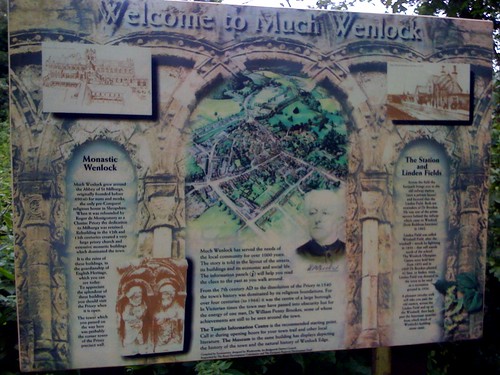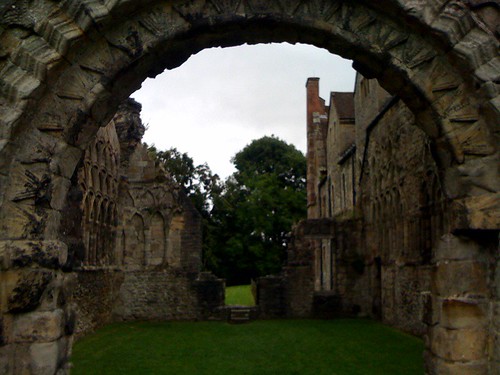rfid tours
 We went to a village called Much Wenlock in Shropshire over the Bank Holiday. It was for a wedding, probably the poshest I'll ever go to. The reception was in Weston Park, the nearby stately home in whose grounds the V Festival took place a couple of weeks ago.
Anyway.
The next day we went to the ruins of an old priory back in Much Wenlock. And wandering round really reminded me of something that Tim Wright was saying about war monuments in his article for 8, a newspaper by the BBC about what it means to be a digital public service broadcaster. Specifically about how great it would be to embed RFID into the monuments and the landscape.
We went to a village called Much Wenlock in Shropshire over the Bank Holiday. It was for a wedding, probably the poshest I'll ever go to. The reception was in Weston Park, the nearby stately home in whose grounds the V Festival took place a couple of weeks ago.
Anyway.
The next day we went to the ruins of an old priory back in Much Wenlock. And wandering round really reminded me of something that Tim Wright was saying about war monuments in his article for 8, a newspaper by the BBC about what it means to be a digital public service broadcaster. Specifically about how great it would be to embed RFID into the monuments and the landscape.
 It'd be great for these English Heritage and National Trust-type things, rather than carrying those push-the-buttons-and-listen wands you carry on on those audio tours. It'd be a great way to immerse your visitors in the stories that surround a place. You could layer up the narratives (rather than edit them into digestible soundbites) and let people follow the thread that most speaks to them.
And following Ted's thoughts on RFID, you could use the same device or mechanism you use to consume the experience could be the same one you use to give back to it, in the form of micro-donations.
That's what you call closing the loop, I believe. Me likey.
It'd be great for these English Heritage and National Trust-type things, rather than carrying those push-the-buttons-and-listen wands you carry on on those audio tours. It'd be a great way to immerse your visitors in the stories that surround a place. You could layer up the narratives (rather than edit them into digestible soundbites) and let people follow the thread that most speaks to them.
And following Ted's thoughts on RFID, you could use the same device or mechanism you use to consume the experience could be the same one you use to give back to it, in the form of micro-donations.
That's what you call closing the loop, I believe. Me likey.Labels: 8, English Heritage, Much Wenlock, National Trust, RFID, Tim Wright

0 Comments:
Post a Comment
Subscribe to Post Comments [Atom]
<< Home